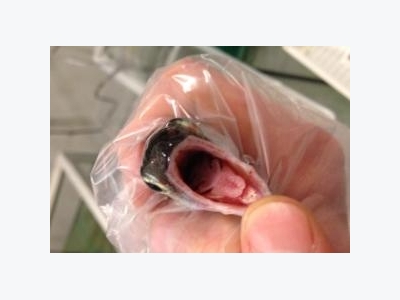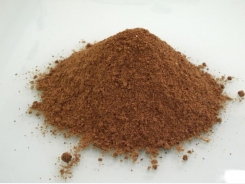3D-scans may help curb widespread fish disease

A reddening of the mouth and jaw area is the hallmark symptom of enteric redmouth disease. (Photo: The University of Copenhagen)
The bacterium that causes enteric redmouth disease can now be tracked with a special 3D scanner. “The scans exceed our wildest dreams,” say researchers.
We often hear that there are too many antibiotics in agriculture. This is actually also the case in fish farming, where 75 percent of the antibiotics are used to fight the widespread fish disease enteric redmouth disease.
The disease is not harmful to humans but it can increase mortality and reduce well-being in fish.
Having scanned rainbow trout with a so-called OPT scanner (Optical Projection Tomography), Danish scientists have now figured out how the deadly bacteria infect the fish.
Fish infected through the gills
”The new scans show us that the fish are infected through their ultra-thin gills,” says Maki Otani, a postdoc fellow at the Department of Veterinary Disease Biology at the University of Copenhagen.
The rainbow trout’s gills are a specialised organ whose chief function is to absorb oxygen from the water so the fish can breathe. Only two cell layers separate the outer water from the blood in the fish’s small arteries.
The new findings show that the bacterium infects the fish via a specific cell type in the gills.
As little as one minute after the bacterium is introduced into the aquaculture, its presence can be registered in the fish’s bloodstream. The bacterium subsequently infects the fish via its intestine and the lateral line canal – a sensory apparatus running along both sides of the body.
Findings may reduce antibiotics use
The OPT scanner is a rare piece of equipment that enables scientists to monitor the infection with unparalleled precision.
The new scans show us that the fish are infected through their ultra-thin gills. Maki Otani
“Our findings are presumably the first of their kind and the scanning images exceed our wildest dreams,” explains Associate Professor Martin Raida, also of the Department of Veterinary Disease Biology, who headed the study, published in the journal Plos One.
The researchers believe the new findings may make it easier to develop a better vaccine to fight the dangerous bacterium, and that could eventually reduce antibiotics use in fish farms.
Có thể bạn quan tâm
Phần mềm

Phối trộn thức ăn chăn nuôi

Pha dung dịch thủy canh

Định mức cho tôm ăn

Phối trộn phân bón NPK

Xác định tỷ lệ tôm sống

Chuyển đổi đơn vị phân bón

Xác định công suất sục khí

Chuyển đổi đơn vị tôm

Tính diện tích nhà kính

Tính thể tích ao hồ



 How to make the fish farming industry more…
How to make the fish farming industry more…  Swine liver hydrolyzate could work as a substitute…
Swine liver hydrolyzate could work as a substitute…